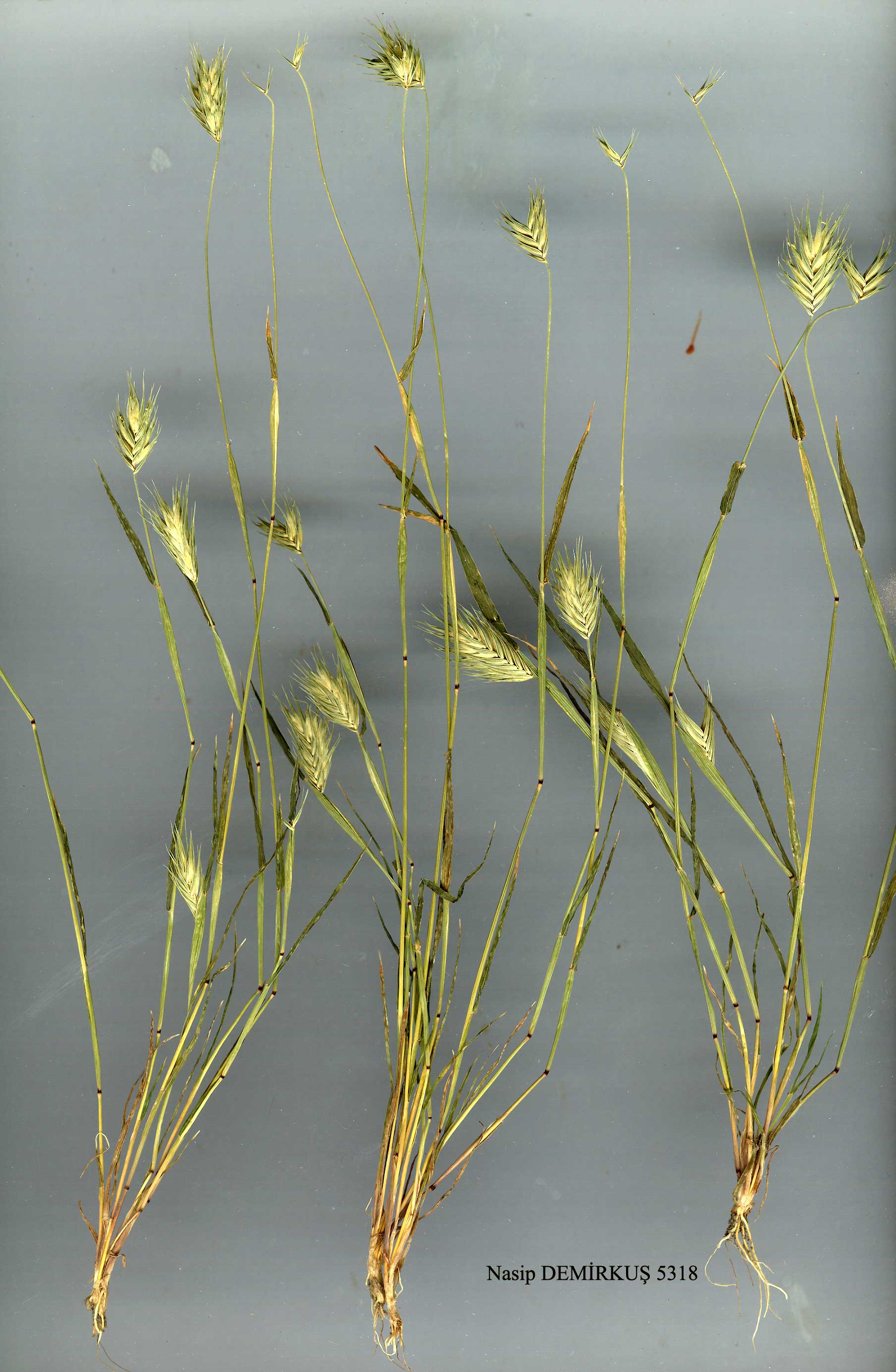| Poaceae |
|---|
Eremopyrum orientale (LEDEB.) JAUB. ET SPACH |
 Eremopyrum orientale (LEDEB.) JAUB. ET SPACH |
Eremopyrum (LEDEB.) JAUB. ET SPACH |
| E. orientale (L.) Jaub. & Spach, I11. Fl. Or. 4:26, t. 319 (1851). Syn: Secale orientale L., Sp. PL 84 (1753); Agropyron orientale (L.) Roemer & Schultes, Syst. Veg. 2:757 (1817); A. bourgaei Boiss., Fl. Or. 5:669 (1884)! Ic: Fl. URSS 2: t. 47a ("67a") f. 9 a-d (1934);F1. Iraq 9: t. 81 (1968); Sakamoto in Mem. Coll. Agr. Kyoto Univ. 114:9, f. lh, 11, f. 3 h (1979). Stems 4-15 cm. Leaf blades 2-3 mm broad, ± scabrid on both surfaces, sometimes shortly pilose above. Spike to 2.5 cm, usually ovate-elliptic, long-exserted. Spikelets 10-15 mm, pilose, with 2-3 florets; rachilla tough. Glumes 5-6.5 mm, lanceolate, strongly curved, prominently veined, gradually tapering into short awn 4-5 mm. Lemma as long as glumes, with prominent keel and short awn 2.5-4 mm. Keels of palea prolonged into.2 short teeth 0.4-0.6 mm, with deep cleft between them. Fl. 3-5. Steppe, lake margins, canal banks, hill-sides, usually on clayey and muddy ground, 980-1400 m. Described from islands of the Aegean Sea. Inner Anatolia. A5 Amasya: Merzifon to Kamişlu, A. Baytop (ISTE 9124)! A7 Trabzon/Erzurum: 'Armenia', Calvert & Zohrab (with Agropyron cristatum subsp. incanum)\ A8 Erzurum: W.of Ispir, 1400m, Barclay 784! Gümüşane: Bayburt, Bourgeau (type of A. bourgaei)! A9 Kars: Kağizman (Grossheim 1: map 313). B4 Konya: Yavşan Memlehasi, nr Tuz G., D. 18697! B5 Kayseri: Karapunar, 1000 m, 1902, Penther & Zederbauer! B7 Erzincan: Kurutilek, vi 1940, Bağda. BlO Kars: 3-5 km E. of Aralik (Aras valley), 850 m, D. 43671! C4 Konya: Küçük Köy, 980 m, Helbaek 2462! C5 Konya: Pertek, nr Niğde, 1300 m, Siehe 1912:580! N. Africa, S. Russia, Crimea, Caucasia, Iran, Iraq, W. Syria, Arabia, Afghanistan, C. Asia, W. Pakistan, N.W. India, Siberia. Ir.-Tur. element? Examination of the type of Agropyron bourgaei has revealed that it differs from E. orientale mainly in having glumes with 3 prominent veins on each side, not 2 per side as in most Turkish specimens of E. orientale. However, in the latter a short third vein can sometimes be traced at the base and for this reason the venation cannot be considered a good diagnostic character. Since A. bourgaei resembles E. orientale in leaf anatomy, spikelet size, length of awns on glumes and lemmas, shape of glumes and dentation of the palea apex, both are here considered to be conspecific. |